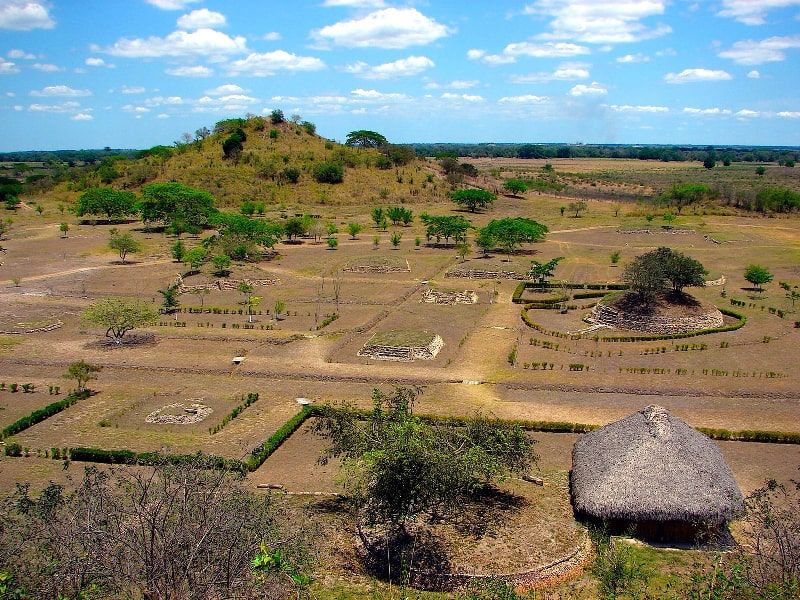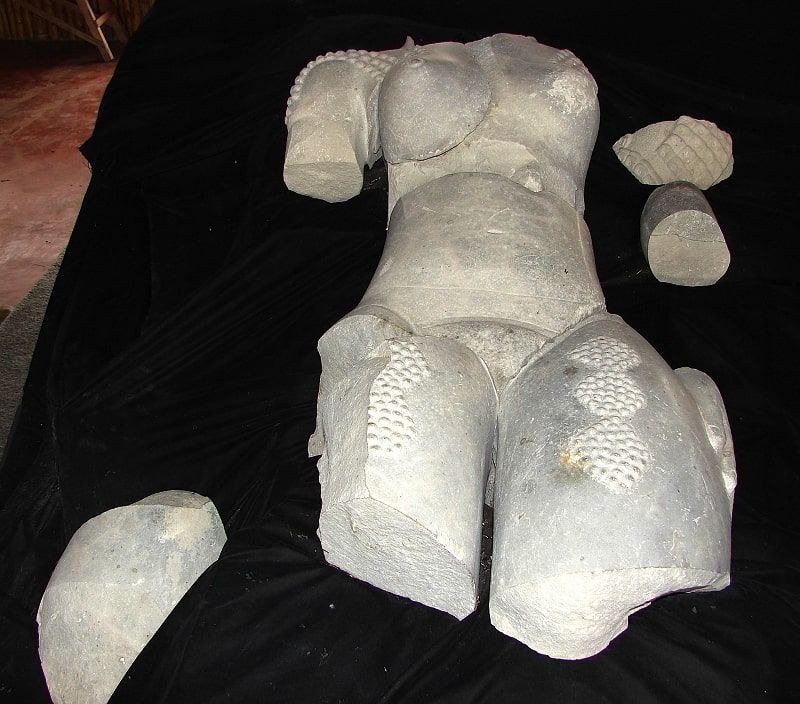Carved stela could mark the passage of time: The monument 32 of the ancient Huastec city of Tamtoc
Monument 32 of the city of Tamtoc, in San Luis Potosi, is a unique piece in the region. Its message remains hidden. Get to know more.

The monument 32 of the ancient Huastec city of Tamtoc, the biggest carved stone of Mesoamerica, could be, according to the proposal of the university archaeoastronomer Jesús Galindo Trejo, a marker of the passing of time, that is to say, of the apparent movement of the Sun throughout the year, and not a lunar observatory as it was established at some time.
The member of the Institute of Aesthetic Research (IIE) of the UNAM recalled that the monolith of four meters high, seven meters long, and more than 27 tons of weight, discovered in February 2005 split into three parts, remained for almost two thousand years submerged in a body of water and covered by mud deposits.
The stela of the archaeological site of Tamtoc, located in the municipality of Tamuín, in San Luis Potosí, is still an unknown quantity, the expert acknowledged. Although it was reconstructed and placed in its original place, its message remains hidden because the Huasteca lacks ethnohistoric sources, and neither has it been studied by archaeology as other regions, the center of the country or the Mayan zone, recognized the expert.
In it appear three personages that are not easily identifiable with deities of the center of Mexico, like Tláloc to Tezcatlipoca. The question is what could be indicating this great stone that in the part of above has 12 interlaces or inscriptions whose message is unknown. "Not all Mesoamerican hieroglyphs have the degree of study that the Maya have had," he added.
Those "cartouches" must have some meaning, but we don't know it. We think that probably they are written in Teenek, that is to say, in Huastec, Mayan language. "This is a great unknown; how did members of a people who speak one of the 30 variants of Maya get here?

Equilibrium in time
In general terms, they are seen standing on skulls. The central one, masked, is larger and has feminine and masculine characteristics; the other two, of smaller size, have no head and hold an object similar to a crown; from their necks, something similar to a liquid, water, or blood flows. The larger character holds such flows, which reach up to him. In addition, four birds look towards the east.
The back of the stela, which is smooth, without carving, is oriented to the south; the front, to the north, to its left, for the observer, is located the east and to its right the west. The archaeoastronomer can measure the orientation of the stone, assuming that it is in its original position, just as the ancient Huastecans left it, with which its discoverer, the archaeologist of the National Institute of Anthropology and History, Guillermo Ahuja Ormaechea, agrees, especially since it is a piece weighing more than 27 tons.
In doing so, the perpendicular line to the stele is very close to the north of the sky; its sides point to the east and west directions, where the star rises and sets. "That means that the monument marks in a balanced way the half of the year: from the spring to the autumn equinox, the carved part of the monolith is illuminated by the Sun, and from the autumn to the spring equinox of the following year it is illuminated, but by its backside, where it does not have any carved drawing." The position of the monolith indicates in a very subtle way the relationship between space and time, Galindo proposed.
Monument 32 would thus appeal to a balance in time, determined by its position. As for the small figures, it could be thought that they indicate the equinoxes, "but the level of interpretation is very broad, we are certainly guessing, although we are trying to clarify the possibilities a little more because in archaeoastronomy we cannot assume any conclusive position, especially because we lack much information". If the cosmogony and deities of the Teenek were better known, it would be possible to interpret the stela with greater precision. However, we do not know about the hieroglyphs either, because there is not a sufficiently large corpus to decipher them, emphasized the university professor.

Moon or Sun?
When it was discovered it was considered a lunar observatory because under the stela a striking offering was found and, in it, an "unexpectedly beautiful" sculpture. It is the mutilated body of a woman, elaborated of a smooth, polished stone; the piece, in addition, is "killed", that is to say, it was cut on purpose. The only thing she has outside of her anatomy are three arrangements of stitches or "scoriations" on her legs; there are 104 (twice 52) in total. On her shoulders, she also has 52 marks.
This number is fundamental in Mesoamerican calendars. In the sculpture there is clear, obvious calendrical information, which could be as old, according to the archaeologist Ahuja, as the most remote date of Mesoamerica indicated in a stela, coming from Monte Alban, Oaxaca, of the year 594 before our era. However, other more recent studies suggest a date around the year 200 B.C.E. And not only that: in the first version in drawing of the monument, it was considered that it had 13 "cartouches" or hieroglyphs; when it was related to the Moon, it was declared a lunar observatory. However, later it was determined that there are 12.
The stela has nothing to do with the Moon. This is a piece dedicated astronomically to the temporal balance that defines the apparent movement of the luminous star. Although this interpretation would be only "a minimal part of the ideological discourse that is in front of us, but that we do not understand". An interesting fact is that for the Huastecans the east is an important direction that leads to the sea, and the small carved birds look that way, emphasized the doctor in Astrophysics and former researcher of the Institute of Astronomy of the UNAM.
On some occasions when it rained in abundance, a mirror of water was created that caused the image of the monolith to duplicate; seen this way, the flows could indicate the extreme positions of the sun king, and the central character, together with its representation in the vital liquid, could represent the axis of the world, axis mundi. Perhaps the four, two real and two reflected, would be the sustainers of the Universe, a concept used by the Mayas; "nobody knows what it can mean".
What is a fact is its direct relation to the apparent movement of the star. "In the Huasteca region, 52 degrees in the shade have been recorded. The Huastecans knew about the sun, they knew it. And of course, they shared with other regions their cult to our star that gives light, heat, but also time.
The architectural structures in Mesoamerica, the largest and most important, are oriented to the rising and setting of the Sun, and not always necessary to the solstices or equinoxes. In this case, the stela and the female sculpture are local manifestations of Huastecan art; they are unique pieces. That is the wonderful thing about this site: that despite not having been sufficiently studied by archaeology, it reveals these objects.





